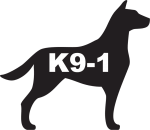This post can be used for two purposes:
One, Listen to the interview to have a better understanding of the concepts from Steven Lindsay's publications that highlight helpful decision-making techniques for professional dog trainers. In particular a conversation about Cynopraxis, LIMA, the Dead Dog Rule, Hydran-Protean side effects, Pleasure and Freedom Interests, and Humane Standards of Practice.
Two, to have a better understanding of how the hijacking of his LIMA principle by the IAABC, APDT, and CCPDT is causing a threat to dog owners and professional dog trainers.
In this interview, you'll discover how the concept of LIMA, originally created by Steven Lindsay as a guide for skilled and educated trainers to achieve harmonious goals for clients and their dogs, has been distorted by the IAABC, shared with the APDT, and weaponized against the very trainer who helped explain its significance to the organization.
If you're a member of one of these organizations, understanding what’s being hidden from you is in your best interest. Listen to the interview and ask yourself:
As a professional dog trainer, what are your obligations to a client? Have you ever really considered this?
Do you have an obligation to be educated and skilled in your craft? To help your clients with a plan that would be difficult for them to execute without supervision, ultimately improving their relationship with their dog and enhancing the dog’s quality of life?
Or…
Do you have an obligation to an organization that dictates what you can and can’t do, including the use of training consequences like punishment to discourage unwanted behaviors?
It’s important to recognize that you cannot reliably train the average imperfect dog to obey in uncontrolled environments without teaching the dog some sense of what they should and shouldn’t do to stay safe.
If you think you can adhere to these guidelines without any consequences, you may not only be misinformed but also potentially negligent if an improperly trained dog is injured or causes injury due to a lack of proper training.
Now, imagine your paying client insists on stopping certain intolerable and unsafe behaviors to give their dog a better quality of life, allowing the dog to safely enjoy activities like running free under the owner's supervision. However, you’re constrained by your organization’s policies, which could result in the loss of your credentials and referrals if you don’t comply:
"If the dog’s guardian still insists on using punishment, you can politely explain that you are committed to following the Humane Hierarchy, which requires you to use punishment only as a last resort and to avoid punishment completely if you feel there are more ethical and effective options. You could then go on to say that you would be happy to work with the person within that framework." - APDT LIMA guidelines.
Following these guidelines, you’re left advising clients to use management and reward-based techniques that are easily found on the internet without the need for a professional. In fact, you might not have even learned the advanced techniques that require careful study and practice because your organization won’t allow you to learn them.
This is the reality within these organizations: self-righteousness as a business model at the expense of clients and their dogs.
To be clear, these organizations do NOT prioritize the welfare of dogs; they prioritize their reputations for marketing purposes. Their righteous efforts are generally focused on gaining an advantage over their competition—educated and humane trainers who prioritize their clients' needs, not the true animal abusers.
If the U.S. is not to follow in the footsteps of the failed animal welfare experiment in the United Kingdom, I strongly urge ALL professional dog trainers to exercise extreme intolerance toward these organizations and their sympathizers who prioritize marketing strategies over the well-being of the profession, dogs, and owners we are obligated to serve.



OMG HOW DID I MISS THIS? Oh yeah, was sleeping. Attacked by a stray dog and got 8 punctures protecting my client. Thank God for GTA! MR. LINDSAY YOU’RE MY OTHER HERO!
You need to login in order to like this post: click here